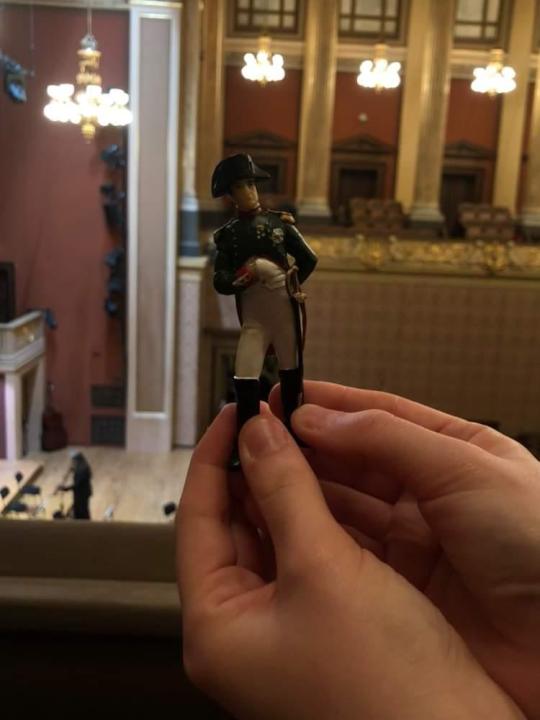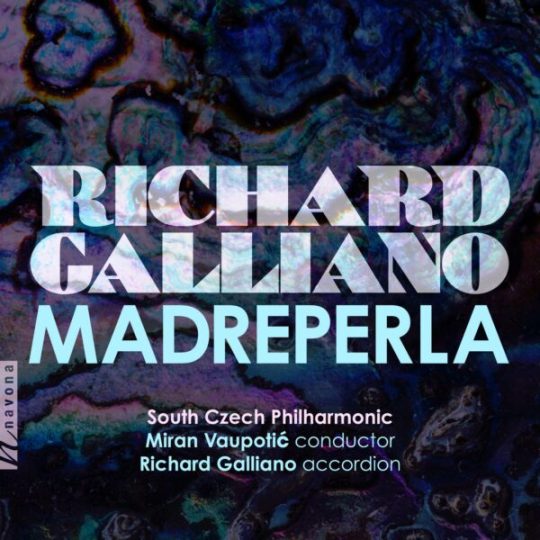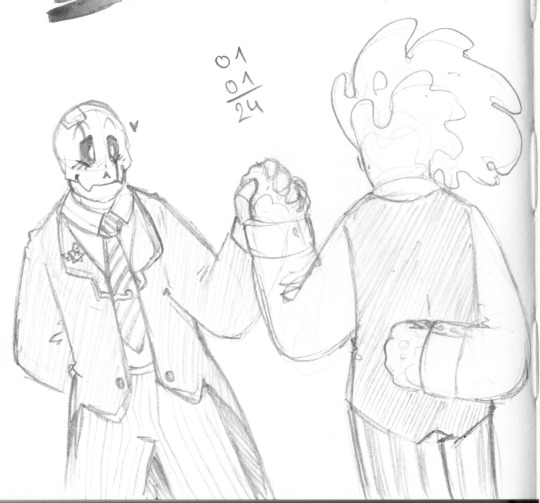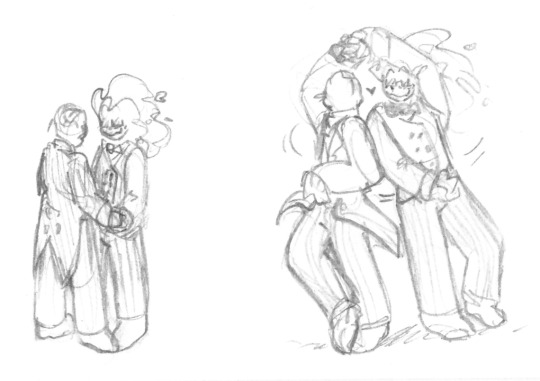#Czech Philharmonic
Text
Review of "Mahler: Symphony No. 4." Semyon Bychkov, Czech Philharmonic. Pentatone PTC 5186 972
During his career Gustav Mahler (1860-1911) wrote nine symphonies. Or ten if you count his final, unfinished symphony. Or eleven if you count his unnumbered symphony Das Lied von der Erde (“The Song of the Earth”). Whatever, judging by the number of recordings available, Nos. 1 and 4 are among the most popular. They are also his shortest symphonies and some of his most accessible, which could account for their allure, and this is disregarding the unfavorable reception No. 4 had upon its premiere in 1901.
To read the full review, click here:
John J. Puccio, Classical Candor
#Classical Music#Classical Music Reviews#Classial Music Albums#Classical Music Album Reviews#Music#Music Reviews#Music Albums#Music Album Reviews#CD#Compact Disc#Mahler#Symphony#Bychkov#Czech Philharmonic#Pentatone
0 notes
Text
Yesterday me and my sister went to Rudolfinum to hear Czech Philharmonic orchestra with...
NACHOLEON


He heard Mozart's and Telemann's symphonies conducted by Giovanni Antonini. 🖤💖🖤
(P.S. He was attacked by anti-napoleonic opposition consisting of 1 house cat named Míňa, he lost his nacho chip due to this attack. He is planning on getting it back tho.)
16 notes
·
View notes
Text
Kromatika 2023 2024 Slovenska Filharmonija Ljubljana
Slovenska Filharmonija – gov.si
Last night’s performance by the Slovenia Symphony Orchestra was exceptional. Seeing them live on stage was a fantastic experience! Bulgarian Conductor Rossen Milanov led the orchestra.
Rossen Milanov Conductor – cd-cc.si kromatika
Kromatika 2023 2024
The Kromatika 2023 2024 performance last night was the sixth in a series of nine. Kromatika concerts highlight the…

View On WordPress
#Academy of Music Ljubljana#Brass Quintet SiBrass#Brass Trio RTV Slovenia#Bulgarian Conductor Rossen Milanov#Cankarjev Dom Gallus Hall Ljubljana#Horn Soloist Mihajlo Bulajić#Kromatika 2023 2024#Leoš Janáček Czech Composer#Ljubljana Conservatory#Maribor Glasbena Matica Choir and Orchestra#Marjan Kozina Symphonic Poem Antiquity (Davnina)#Marjan Kozina Symphony in Four Movements#Novo Mesto Slovenia#Orchestral Rhapsody Taras Bulba by Czech Composer Leoš Janáček#Post-War Slovenian Philharmonic#Reinhold Glière Concerto for Horn#RTV Slovenia Symphony Orchestra Ljubljana#Russian Composer Reinhold Glière#Russian Novelist Nikolaj Gogol#Slovenia Composer Marjan Kozina#Slovenia Symphony Orchestra#Slovenian Partisan Army 1941-1945#Slovenska Filharmonija#Taras Bulba and Other Tales#Wind Quintet Quintologia#Zaporozhian Cossack Taras Bulba
0 notes
Text
MUZYCZNE REKOMENDACJE: Richard Galliano & South Czech Philharmonic, Miran Vaupotić “Madreperla”
Parma Recordings, 2023
Znakomity akordeonista Richard Galliano na swojej najnowszej płycie prezentuje własne kompozycje wykonane z towarzyszeniem orkiestry. W nagraniach wzięła udział South Czech Philharmonic pod dyrekcją Mirana Vaupotića.
To nie pierwsza współpraca Galliano z orkiestrą. Liczne są również jego nagrania z kameralnymi zespołami muzyki klasycznej. Na albumie znalazły się trzy…

View On WordPress
0 notes
Text



listening to Czech Philharmonic's new year concert and drawing blorbos dancing. good two hours.
#razzmatazz related drawings#grillby#grillster#gaster#fanart#rough#undertale#traditional art#i think i. ALMOST have the rough sketchy shape of a shoe down#the moment i need to add any detail it explodes under my hands though rip fhsdkhj#gaster's little tails can work ALMOST as well as a skirt hfaskj#I STILL HAVE THAT WIP WHERE THEY GO TO A BALL SITTING IN MY DRAFTS...... OUGH#i need to replay undertale so I can absorb papyrus' and sans' voice so I can properly finish their little part in it
40 notes
·
View notes
Text
YouTube Links: Beethoven 6, Dvořák 7
Submitter's comments:
Beethoven 6 (1 submittal)
No comments
Dvořák 7 (1 submittal)
I saw Dvořak's 8th and 9th symphonies on the list and knew I couldn't let you get away with not including his 7th. It's a hot take, I know, but not only think do I think it bests the Czech maestro's two follow-ups — I also believe it to be the greatest symphony ever written. And I've heard a ton! It's a stormy piece, full of diminished sevenths, that weaves bold Germanic influence (particularly Brahms) and the rustic Czech folk music that defined Dvořak's earlier pieces.
(Timestamps from this recording, with Kubelik conducting the Bavarian Radio in 1978. I wish his '71 recording with the Berlin Philharmonic was on YT but I guess we can't have nice things.)
Dvořak starts off with low rumblings from the timpani and strings, and introduces a terrifically Brahmsian 6/8 theme. The first movement is amazing, if not perfect — setting a high bar for a symphony that somehow still gets *better with each movement*. The second movement, which begins at 11:41, is a phenomenal work of beauty from the moment you first hear the wistful clarinet theme. It first reaches a climax at 14:53, and then later at 18:24. Supposedly, part of the inspiration for this movement was the death of his mother, which makes it all the more impactful. The following scherzo (20:55) does an incredible job of balancing a melody and counter-melody, and the trio (23:27) helps make this one of the best scherzi out there, combining a light touch with a resonant underlying emotional current. However, as good as the first 3/4 of the symphony is, it pales in comparison to the magnificent finale vaguely in sonata form (28:17). Immediately heard is a rising octave theme that collapses to an almost frightening G♯ (tritone in D minor), later developed into a soaring arpeggio theme in the strings (29:07). A more serene secondary theme follows, before leading into the development, starting with the clarinet playing the arpeggio theme at 31:27. The initial octave theme and the arpeggio theme combine at 33:14 to mysterious effect. Finally, at 36:19, the piece ends with a dramatic — though not drawn-out — climax, famously concluding with a Picardy third.
62 notes
·
View notes
Text
Born in Hamamatsu, Japan, and educated at Boston’s Berklee College of Music, renowned jazz pianist and composer Hiromi Uehara – known professionally as Hiromi – splits her time between homes in New York and Tokyo. Her musical skills were recognized from an early age. At 14, Hiromi performed with the Czech Philharmonic Orchestra. Three years later, Chick Corea invited her to share the stage at his Tokyo concert. Recognized for her artistry by DownBeat’s annual critics and readers polls, Hiromi is currently touring to promote her album “Sonicwonderland.” Fans may follow her music and travel updates on Instagram. This interview has been edited for clarity and length.
4 notes
·
View notes
Text



OTD in Music History: Composer Antonin Dvorak (1841 - 1904) leads the London Philharmonic in the world premiere of his immortal Cello Concerto, with English cellist Leo Stern (1862 - 1904) playing the soloist’s part. It is immediately hailed as a masterpiece, and to this day, it is widely hailed as the finest cello concerto ever written. Upon hearing it for the first time, Dvorak's good friend Johannes Brahms (1833 – 1897) allegedly remarked: “Why on Earth didn’t I know that one could write a cello concerto like this? If I had only known, I would have written one myself long ago…”
The first Bohemian composer to truly achieve worldwide recognition, Dvorak is notable for the strong "nationalist" bent of his music.
Bedrich Smetana (1824 - 1884) -- Dvorak’s senior by 17 years -- had already laid the foundations of the Czech nationalist movement in music, and is recognized as “The Father of Czech Music” within the Czech Republic, but after Smetana’s tragic early death from syphilis, it fell to Dvorak to develop and extend this legacy in an impressive series of works that have achieved lasting popularity comparable with any music to come out of Germany, France, Italy, or Russia.
The secret to Dvorak's success lies first and foremost in his incredible gift for melody, and secondarily in the instantly recognizable and delightfully fresh Czech folk character displayed in much of his best music. Dvorak composed in all major musical genres, and his oeuvre contains works that can justifiably be hailed as true masterpieces in every single major form – a very unusual accomplishment, even among the rarified ranks of “the great composers.”
PICTURED: A beautiful “Imperial”-sized cabinet photograph of Dvorak, which Dvorak signed and inscribed to Hungarian music critic Andor Merkler in Budapest in 1899. This photo was signed on the occasion of the first performance of Dvorak’s Cello Concerto to take place with Dvorak conducting *and* Hanus Wihan serving as the soloist. (Wihan was the cellist who had requested that Dvorak write the concerto, as well as the dedicatee of the work – but for logistical reasons, Stern had ended up giving the world premiere several years earlier.)
#Antonin Dvorak#Dvorak#Antonín Dvořák#Dvořák#classical music#music history#composer#classical composer#classical#classical studies#Seventh Symphony#Symphony#organist#Concerto#Concert#ouvertura b moll#Overture#Sonata#Organ#Piano#classical piano#classical pianist#pianist#maestro#Romeo and Juliet#Nocturne#Serenade#Slavonic Dances#Violin Concerto#Othello
33 notes
·
View notes
Text
underrated aspect of the classic direct to vhs barbie movies is how they are all for some reason scored by the Czech Philharmonic Chamber Orchestra
10 notes
·
View notes
Text
youtube
Jaroslav Krček (b.1939) - String Quartet No. 2, Op. 162: I. Largo ·
Czech Philharmonic Quartet
5 notes
·
View notes
Text
Carl Davis 1936 – 2023

Carl Davis
October 28, 1936 – August 3, 2023
American-Born British Conductor and Composer.
Order of the British Empire Recipient
Born in Brooklyn, New York
Died in Oxford, England
Bafta-Winning Composer Carl Davis Dies Aged 86 - The Guardian
Musician best known for BBC’s Pride and Prejudice and 1981’s The French Lieutenant’s Woman
also composed for silent film, stage and concert hall
Carl Davis, ‘French Lieutenant’s Woman’ and ‘Napoleon’ Composer, Dies at 86 - Hollywood Reporter
His music for classics stimulated a global revival of silent film performance with live orchestras.
Carl Davis, BAFTA-Winning Composer of ‘The French Lieutenant’s Woman,’ Dies at 86 - Variety
Carl Davis - Wikipedia
♪♪♪ ♪♪♪ ♪♪♪

Carl Davis and The City of Prague Philharmonic Orchestra -
End Titles Theme, The World at War (1973 | 2004)
Carl Davis
from:
"The World at War" Soundtrack
(30th Anniversary Edition)
Orchestral | Soundtrack
JukeHostUK
(left click = play)
(320kbps)
Personnel:
Carl Davis: Conductor
The City of Prague Philharmonic Orchestra
Recorded:
@ The Barrandov Smecky Soundstage
in Prague, The Czech Republic
during August of 2003
Released:
on January 20, 2004
Silva Screen Records
Composed in 1973
♪♪♪ ♪♪♪ ♪♪♪
5 notes
·
View notes
Text
Hiromi Uehara
youtube
Pianist and composer Hiromi Uehara, known to her fans simply as Hiromi, was born in 1979 in Hamamatsu, Japan. Hiromi performed with the Czech Philharmonic Orchestra at the age of 14. In 2003, she released her first album, and won Recording Industry Association of Japan’s Jazz Album of the Year Award. Hiromi performed at the Kennedy Center in 2004 and in 2022. In 2021, she performed at the opening ceremony of the Tokyo Olympics.
8 notes
·
View notes
Text
Russian soldiers have shot dead a Ukrainian musician in his home after he refused to take part in a concert in occupied Kherson, according to the culture ministry in Kyiv.
Conductor Yuriy Kerpatenko declined to take part in a concert “intended by the occupiers to demonstrate the so-called ‘improvement of peaceful life’ in Kherson”, the ministry said in a statement on its Facebook page.
The concert on 1 October was intended to feature the Gileya chamber orchestra, of which Kerpatenko was the principal conductor, but he “categorically refused to cooperate with the occupants”, the statement said.
Kerpatenko, who was also the principal conductor of Kherson’s Mykola Kulish Music and Drama Theatre, had been posting defiant messages on his Facebook page until May.
The Kherson regional prosecutor’s office in Ukraine has launched a formal investigation “on the basis of violations of the laws and customs of war, combined with intentional murder”. Family members outside Kherson lost contact with the conductor in September, it said.
Condemnation by Ukrainian and international artists was swift. “The history of Russia imposing a ‘comply or die’ policy against artists is nothing new. It has a history which spans for hundred of years,” said the Finnish-Ukrainian conductor Dalia Stasevska, who was scheduled to conduct the Last Night of the Proms at London’s Albert Hall last month before it was cancelled because of the Queen’s death.
“I have seen too much silence from Russian colleagues,” she said. “Would this be the time for Russian musicians, especially those living and working abroad, to finally step up and take a stand against the Russian regime’s actions in Ukraine?”
A fortnight ago Stasevska drove a truck of humanitarian supplies into Lviv from her home in Finland, before conducting the INSO-Lviv orchestra in a concert of Ukrainian contemporary music.
“We know the Russian regime is hunting activists, journalists, artists, community leaders, and anyone ready to resist the occupation,” said the prizewinning Ukrainian novelist turned war crimes investigator Victoria Amelina.
“Yet, even knowing the current pattern and history, we cannot and, more importantly, shouldn’t get used to hearing about more brutal murders of a bright, talented, brave people whose only fault was being Ukrainian.”
She drew a parallel between Kerpatenko and Mykola Kulish, the Ukrainian playwright after whom the theatre where the conductor worked is named.
“Kulish was shot on 3 November 1937, near Sandarmokh, with 289 other Ukrainian writers, artists and intellectuals. Yuriy Kerpatenko was shot in his home in Kherson in October 2022,” she said.
The Russians’ actions were “pure genocide”, said the conductor Semyon Bychkov from Paris, where he was performing as music director of the Czech Philharmonic. The St Petersburg-born conductor left Russia as a young man in the 1970s.
“The tragic irony of this is that talk about the superiority of Russian culture, its humanism,” he said. “And here they murdered someone who is actually bringing beauty to people’s lives. It is sickening.
“The bullets don’t distinguish between people. It didn’t make me feel worse that this man was a conductor, it just confirmed the pure evil that’s been going on even before the first bombs fell on Ukraine.”
The novelist Andrey Kurkov, author of Death and the Penguin, said: ““Now the name of Yuriy Kerpatenko will be added to the list of murdered artists of Ukraine. I increasingly think that Russia is not only seeking to occupy Ukrainian territories, but also diligently destroying Ukrainian identity, an important part of which is Ukrainian culture.”
Ukrainian author Oleksandr Mykhed, who joined the military at the outbreak of the war, and whose home was destroyed by Russian shelling, said: “Russia is trying to reconstruct the Soviet Union in the occupied territories. To reconstruct something improbable.
“One of the key components of Soviet policy was the destruction of culture of the enslaved countries. Murder of cultural figures, purging of libraries, banning of national languages.
“The modern occupiers are fully following this strategy. Destroying culture, sports, education.
“And when our territories are deoccupied, we will learn about dozens and hundreds of such terrible stories. Stories of destruction and heroic resistance.”
“It is absolutely terrifying,” said chief stage director of Kyiv’s National Opera of Ukraine, Anatoliy Solovianenko. “Whether he was a doctor, or a worker, or an artist, it makes no difference. He was a human, and he refused to comply.”
8 notes
·
View notes
Text
your periodic reminder that i make lots of playlists. and today’s playlist is my old mormor one, because i’m thinking about these idiots again. it’s a little messy because i made it a long time ago and haven’t gone back over it (can you smell the 2015 fandom song choices) but still good and providing my soundtrack for today (:
Title: MorMor
Description: Sebastian Moran and James Moriarty are absolutely fucked. And also in love. Kind of.
Runtime: 2h 17m
v full song list beneath the cut v
Deathbeds - Bring Me the Horizon
Take Me to Church - Hozier
Red Right Hand - Nick Cave & The Bad Seeds
Me And The Devil - Soap&Skin
Dog Teeth - Nicole Dollanganger
Fight & Fuck - BigKlit
Piano Concerto No. 2 in C Minor, Op. 18 - Sergei Rachmaninoff, perf. Czech Philharmonic Orchestra and Khatia Buniatishvili
Seven Devils - Florence + The Machine
Devil Like Me - Rainbow Kitten Surprise
Everybody Wants To Rule The World - Lorde
Before I Ever Met You - BANKS
Cold Love - Rainbow Kitten Surprise
I Found - Amber Run
Can You Feel My Heart - Bring Me The Horizon
Duet - Sugar Vendil, Trevor Gureckis
Brotsjór - Ólafur Arnalds
Money Power Glory - Lana Del Rey
Kill Of The Night - Gin Wigmore
Kill For You - Zolita
No Light To Be Found (Fare Tee Faith, the Path Is Yours) - Castanets
You Are The Blood - Castanets
You’re Not God - Anna Calvi
Tear You Apart - She Wants Revenge
If I Had A Heart - Fever Ray
Sinematic (Acoustic Vers.) - Motionless In White
No Time To Die - Billie Eilish
Animal - Troye Sivan
Never Take Me Alive - I WAS THE LION
House of the Rising Sun - Lauren O’Connell
#1 Crush (Original Mix) - Garbage
Lacrimosa - Apache
#mormor#sebastian moran#james moriarty#sebastian moran/james moriarty#jim moriarty#sebastian moran/jim moriarty#tiger#the spider#bbc sherlock#sherlock#playlist#Spotify
8 notes
·
View notes
Photo

Vltava Philharmonic Hall Prague - Designed by Hajek Architekti, Visualization by @vizerenderings for @iprpraha 4th prize international contest, big congratulation and thanks ! . ⭕ What do you think about this design and visualization? 🔻Tag your Architect Friends! . ❌Turn ON Post Notifications to see new Contents.❗ _ _ _ _ _ _ _ _ _ _ _ _ _ _ _ _ _ _ _ _ _ _ _ _ Follow @archdlofficial for more! 🖤 Tag #archdl or DM your works for Featuring! . . . . . . . . . . . . . . #thearchiologist #archviz #arch_grap #allofrenders #archigram #archisource #pimpmyplan #instarender #archolution #archihub #architonic #av_platform #architectureonpaper #koozarch #architecturestudent #thebna #itscritday #rendering #showitbetter #instaarch #dezeen #rendering #arquitecturamx #architonic #illustrarch #next_top_architects #wisearchi #architectureideas #architecture_hunter (at Prague, Czech Republic) https://www.instagram.com/p/CedKGHFOy-P/?igshid=NGJjMDIxMWI=
#archdl#thearchiologist#archviz#arch_grap#allofrenders#archigram#archisource#pimpmyplan#instarender#archolution#archihub#architonic#av_platform#architectureonpaper#koozarch#architecturestudent#thebna#itscritday#rendering#showitbetter#instaarch#dezeen#arquitecturamx#illustrarch#next_top_architects#wisearchi#architectureideas#architecture_hunter
4 notes
·
View notes
Text

(English / Español)
Chemical Reactions (2020) is a joint album project presented by Gavin Harrison and Antoine Fafard. The original music on this album features a hybrid between the progressive-fusion sonic approach and the world of chamber and orchestral music. Fafard’s compositions highlight Harrison’s innovative drumming through this intense and unique journey of epic proportions.
The album kicks in with Transmutation Circle, a piece where drums and electric bass interact with a string quartet, while Harrison provides occasional marimba parts to the music. The format on this first piece is the blueprint of almost half the album. Singular Quartz follows and showcases a different orchestration and where drums and bass play along a violin, cello, marimba and vibraphone. On this track, Jerry Goodman who by now has been a frequent collaborator to Fafard’s music, performs the acoustic and electric violin parts.
The album concludes with Holding Back the Clock and Chemical Reactions, two pieces where Harrison and Fafard perform with the Janáček Philharmonic Orchestra. Based in Ostrava, Czech Republic, the symphonic ensemble was recorded back in March 2016 and conducted by Anthony Armore.
Chemical Reactions offers a true fusion of musical styles and tones. It was created to stretch out artistic possibilities and open up new horizons.
youtube
Chemical Reactions (2020) es un proyecto discográfico conjunto presentado por Gavin Harrison ( drums, percussion) y Antoine Fafard (bass) . La música original de este álbum presenta un híbrido entre el enfoque sónico de la fusión progresiva y el mundo de la música de cámara y orquestal. Las composiciones de Fafard realzan la innovadora batería de Harrison a través de este viaje intenso y único de proporciones épicas.
El álbum arranca con Transmutation Circle, una pieza en la que la batería y el bajo eléctrico interactúan con un cuarteto de cuerda, mientras Harrison aporta ocasionales partes de marimba a la música. El formato de esta primera pieza es el esquema de casi la mitad del álbum. Le sigue Singular Quartz, con una orquestación diferente en la que la batería y el bajo tocan junto a un violín, un violonchelo, una marimba y un vibráfono. En este tema, Jerry Goodman, colaborador habitual de la música de Fafard, interpreta las partes de violín acústico y eléctrico.
El álbum concluye con Holding Back the Clock y Chemical Reactions, dos piezas en las que Harrison y Fafard actúan con la Orquesta Filarmónica Janáček. Con sede en Ostrava (República Checa), el conjunto sinfónico fue grabado en marzo de 2016 y dirigido por Anthony Armore.
Chemical Reactions ofrece una verdadera fusión de estilos y tonos musicales. Fue creado para ampliar las posibilidades artísticas y abrir nuevos horizontes.
Source: Bandcamp.com
0 notes